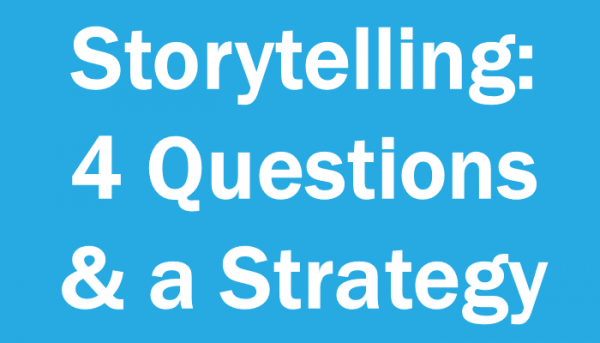
Two weeks ago, we defined a story as the result of people pursuing what they want. Let’s build upon that foundation to help you tell your next business story.
Business storytellers start with the following four questions:
- Who’s the person?
- What does the person want?
- What obstacles stand in between the two?
- How does the person choose to overcome those obstacles?
The answers to the first two questions are enough to create interest in the listener’s mind. The answers to the last two require strategy.
I’ve found that strategy is one of the most misused words. For some reason, many business folks use it to describe tactics. So, for the avoidance of doubt, let’s define strategy as a plan designed to overcome an obstacle while tactics are the specific tasks that must be completed to execute that plan.
There are an infinite number of tactics and a handful of strategies. According to Sun Tsu, the author of the 2,500-year-old The Art of War, there are only five strategies, also known as the five “Fs”: Frontal, Fortress, Fragment, Flank, and Feign. A business storyteller must choose at least one as the reason for the protagonist’s (person) actions to overcome the obstacle.
1) Frontal Strategy
When faced with an 800-pound gorilla (the obstacle), it’s tempting to look the beast in the eye and deal with it head-on. Frontal strategies are used all the time in movie climax- scenes like when Superman battles Lex Luthor or Luke Skywalker lightsabre-dances with Darth Vader. We also see it in business, such as when Blu-ray went head-to-head with HD DVD and the FBI sued Apple to unlock an iPhone.
While audiences may delight in watching heavyweights duke it out, pitting strength versus strength comes with a caveat. Sun Tsu advises that frontal strategies require the user to have at least a 3:1 advantage over the gorilla. Without such an advantage, frontal strategies can have unfavorable results, such as in Alderaan vs. the Death Star or Napster vs. The Recording Industry Association of America.
2) Fortress Strategy
Sometimes a protagonist wants to be left alone, but a gorilla messes with the plan. Rather than dealing with the gorilla, the protagonist implements a fortress strategy and waits for the gorilla to give up. For example:
- The Three Little Pigs built a brick house and waited for the Big Bad Wolf to hyperventilate.
- Mohammed Ali leaned against the ropes and let his opponents wear themselves out as he Rope-A-Doped them.
- IBM reminded its customers that “Nobody ever got fired for choosing IBM.”
The five strategies can be divided into two categories: brains vs. brawn. The first two fall into the brawn category. The remaining three require a little more thought.
3) Fragment Strategy
Sometimes an obstacle is too big to take on as a whole, and the protagonist needs to break it into manageable pieces. For example, suppose our protagonist is a sales executive who must sell against the industry’s 800-pound gorilla. Rather than trying to sell into the competitor’s most visible accounts, the protagonist chooses to stay off the RADAR by nibbling on its smaller accounts. Or, rather than competing head-to-head with the competitor’s entire product line, the sales rep decides to pick-off weaker ones. By using a fragment strategy, the protagonist chips away at the competitor’s advantage over time.
4) Flanking Strategy
Life isn’t fair. Sometimes the rules of the game benefit the gorilla. It’s at times like these when the protagonist must change the rules via a flanking strategy.
- Herb Brooks, the coach of the 1980 USA Olympic Hockey Team, defeated an unbeatable USSR team by changing the way his team played hockey.
- VHS’s inferior technology won the videotape format war over Betamax by licensing it to multiple manufacturers instead of holding it as a proprietary technology.
- Harry Selfridge allowed his customers to touch his retail merchandise while his competitors kept them at an arm’s length.
- Zappos eliminated the risk of online purchases by making product returns easy.
5) Feign Strategy
The last strategy is the most cerebral of the five. It requires a protagonist to outthink the gorilla through deception or by setting a trap. Fein strategy implementations include:
- a wolf wearing sheep’s clothing
- a coach calling a trick play
- an army hiding in a Trojan Horse that’s offered it to its enemy as a gift
- sacrificing a piece on a chessboard
Give it a try. Identify the people, their wants, and obstacles. Then find a strategy that the protagonists will employ to pursue those wants. Do the protagonists have a three-to-one advantage to tackle the problem head-on or will they just hold on for dear life? Will the main character break the obstacle into smaller pieces, change the rules of the game, or use sleight of hand?
Use these questions to form the foundation for your next story.